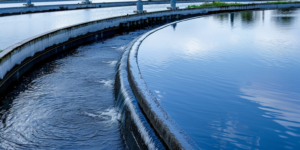How To Choose The Best Type Of Cabinets For Your Science Lab

One of the most significant costs incurred when setting up research and educational facilities is lab equipment. A laboratory is an ideal place to perform and conduct research for various outcomes, a dynamic environment that changes constantly. As such, the environment of a laboratory must be flexible and evolving as well to accommodate changing needs of technicians and outcomes of research to ensure the integrity of results.
The Lab Cabinet
A lab cabinet is a vital part of every well-equipped research space. Labs must be adaptable and multi-purposed for various users and various environments to ensure durability and quality. As you consider the needs of your science and research lab, consider the following questions:
- What kind of research space is needed?
- How do we need to store materials?
- What kind of security measures must be in place to ensure the integrity of research
- How many people will be using lab space?
- What kind of environment is needed to perform studies and research?
- How durable and long-lasting must materials be to ensure high-quality work?
As you formulate your day-to-day operations, consider these aspects of cabinet design to craft your dream research and development facility.
Cabinet Materials
As you decide what materials to use for your lab, several factors come into play. Budget, sterilization needs, and research processes must all be taken into consideration when deciding which material to purchase. Some of the following materials include wood and laminate (ideal for basic product testing and dry labs), steel (great for wet lab environments with a moderate need for sterilization), and stainless steel (the standard for biology, medical, chemical, and food testing labs).
The function of your science lab will often determine which type of material is used to create an optimal work environment.
Mechanical Features
The mechanical features of your cabinetry are every bit as important as the rest of your lab. These pieces will endure the most wear and tear, and they must withstand hours of use as your research is conducted. Look for these features when choosing the best option for your environment.
1- Slides
Look for drawer slides that offer full-extension, making sure that they have been properly tested to bear the unique weight loads that you need. Also consider the finish of slides, particularly if your lab will be conducting research in a corrosive environment.
2- Hinges
Corrosion resistance of hinges will be something else to consider as you choose hardware. Hinges come in low, medium, and high-frequency use options; most labs require the use of a heavy use variety, with more than twelve hours of repeated use needed in a day’s work.
3- Casters
Some lab equipment is more efficient when flexible. the use of mobile workstations, storage units, and furniture is becoming the gold standard of research and development. Efficient casters are made from high-quality, premium-grade steel, and are easily rolled across all types of flooring without the inconvenience of getting clogged with dirt and debris. Smooth movement ensures that cabinet contents don’t get strewn about or damaged, and repeated use will be necessary as you move materials from place to place in a safe, sanitary manner. Look for high quality casters that can bear weight efficiently and provide smooth transition of materials and people from place to place.
Certifications
High quality cabinetry has been manufactured and designed to meet stringent standards. Looking for certifications such as BIFMA, SEFA, and UL.
to ensure that materials match the job that they are intended for. Certifications such as the Scientific Equipment and Furniture Association are not handed out flippantly; materials that reach this certification are of the highest quality, and they will hold up under heavy demands that scientific research requires.
Choosing the right materials for your laboratory will ensure that the work you do will be efficient, important, and valued. Consider these factors as you set up your workspace, and look forward to productive days filled with insight and information.







